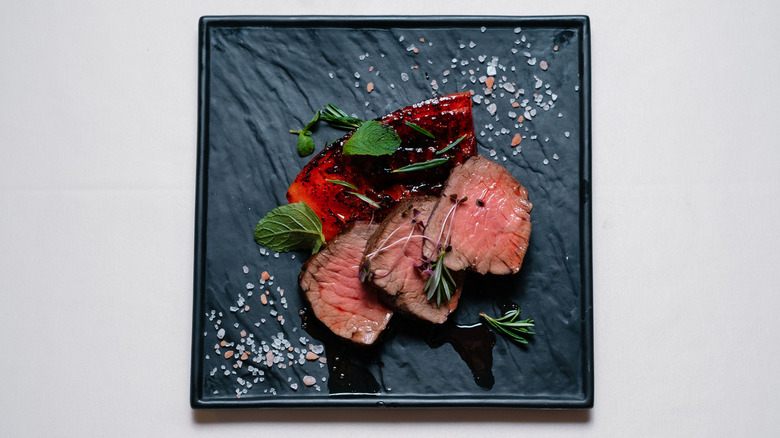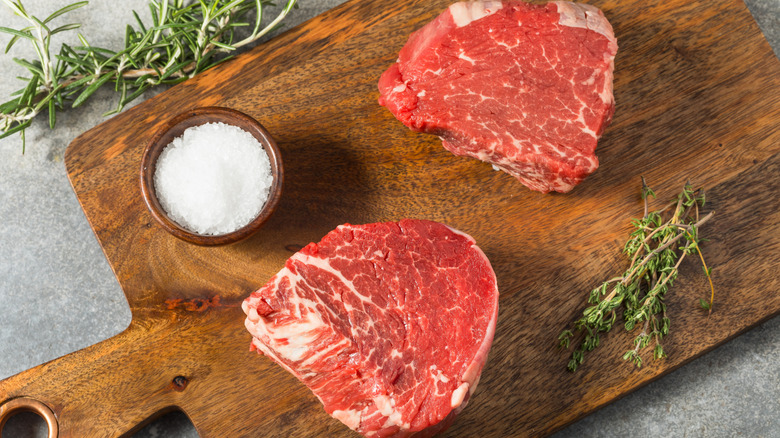What's The Difference Between Chateaubriand Steak Vs Filet Mignon?
Even for fervent carnivores, some steak selections can take a moment to parse out. While most meat eaters will know their strip from their skirt, other varieties can appear a little too close to call. The difference between a T-bone and a porterhouse, for example, can come down to centimeters, and a skirt and a flank are virtual doppelgängers. One would also be forgiven if they couldn't identify the nuances separating an out-of-context bite of chateaubriand from an unnamed taste of filet mignon.
Although they are distinct from one another, a chateaubriand and a filet mignon do share similarities. They are both cut from the prized beef tenderloin. Thanks to that superior origin, they will each be among the most expensive steaks you can find. But chateaubriand is cut from the center of the tenderloin, while filet mignon is cut from the end.
In the back of the house, or at your butcher's counter, a chateaubriand and a filet mignon are easier to tell apart. The chateaubriand is a roast — in composition rather than preparation at this stage — so it's larger than a single steak and cylindrical in shape. It could most accurately, and least appetizingly, be described as a loaf of beef in appearance. Because it's sliced before it reaches the plate, plenty of people will not be able to identify a raw chateaubriand. A filet mignon is more classically recognizable. It's among the daintier cuts, somewhat rounded, and uniformly rouge, with light, lacey marbling.
Preparing a chateaubriand versus a filet mignon
A lovely filet mignon needs little more than salt, pepper, and a quick butter baste in a nice hot pan to finish to medium rare perfection. Making a chateaubriand isn't much harder; it just takes a little longer. But an old preparation method by the same name makes matters more complicated.
The earliest chateaubriand, dating back to 1820s France, is said to refer to a preparation rather than a consistently particular cut alone. The technique used three steaks: two of poor quality and one more desirable. The bad steaks would sandwich the good steak to absorb direct heat and theoretically keep the good steak tender. Fortunately, a couple hundred years later, we've come up with more creative ways to use different parts of the cow, and this ghastly food waste is out of fashion.
Today, a chateaubriand needs a few twine ties, like most roasts, to maintain its shape for aesthetics, and for more even cooking. It should also be seasoned only with little more than salt and pepper before it's browned all around on the stovetop. It ultimately roasts at 375 degrees Fahrenheit and begins approaching its minimum doneness at around 15 minutes. Like the filet, chateaubriand is best served medium rare.

